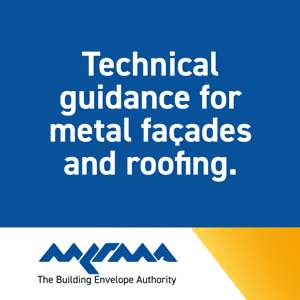The role of PMMA in sustainable design
- Specify & Build
- May 19
- 3 min read
Wayne Chissell, Technical Director at WestWood, explains how PMMA liquid-applied membranes contribute to more sustainable newbuilds and refurbishments.
As the demand for sustainable and energy efficient buildings grows, the impact of roofing materials has become a crucial consideration. The products used in a roofing system can significantly affect energy efficiency, carbon emissions, waste, and a property’s lifespan. The waterproofing layer plays a vital role in enhancing sustainability, with cold-applied PMMA (Polymethyl Methacrylate) liquid-applied membranes offering several environmental advantages.

Cooler roofs
Incorporating solar reflective materials on the roof is an effective way to make a building more sustainable. By reflecting sunlight and reducing heat absorption, these materials improve energy efficiency, enhance indoor comfort and mitigate the urban heat island effect. Reduced heat exposure decreases thermal stress too, helping to extend the roof’s lifespan.
Available in a range of light colours, including white, beige and pale grey, PMMA liquid-applied membranes can achieve a solar reflectance of between 0.60 – 0.85 and Solar Reflective Index (SRI) values above 80. Solar reflectance is measured on a scale from 0 to 1, and the SRI is calculated by combining reflectivity and thermal emittance - the higher the value, the cooler the surface. Advances in technology have also introduced a PMMA-based seal coat with a solar reflectance of 0.94 and an exceptionally high SRI of 114, which can significantly lower roof temperatures by up to 20°C.

Lower carbon emissions
PMMA-based systems are solvent free and cold applied, eliminating the need for hot works. This significantly reduces carbon emissions during installation while enhancing site safety. Bituminous waterproofing membranes that require heat to install often use torches fuelled by Liquefied Petroleum Gas (LPG). However, based on data from the US Energy Information Administration, burning just 1kg of LPG releases, on average, approximately 2.98kg of CO2 into the atmosphere. As circa 47kg of LPG are required to install 150m2 of bituminous membrane, the emissions are substantial, even on smaller roofs.
A cold-applied PMMA waterproofing system requires no LPG-fuelled equipment. The waterproofing layer is applied ‘wet-on-wet’ with a polyester reinforcement fleece, bonding seamlessly to the substrate. Once cured, within approximately 25 to 30 minutes, the surface layer is installed onto the waterproofing to form a single, uniform membrane. Cold-applied PMMA systems are also low in volatile organic compounds (VOCs), further reducing their environmental impact compared to solvent-based alternatives.

Built to last
PMMA’s chemical structure is free from plasticisers and provides a high tensile strength and elasticity. These characteristics ensure the membrane can withstand structural and thermal movements and is highly resistant to UV radiation, making it highly durable. When installed correctly by an approved contractor, the PMMA build-up can be guaranteed for up to 25 years, reducing the need for any repairs and the associated waste, transport journeys and carbon emissions. If a PMMA-liquid applied membrane does get damaged or reaches the end of its design life, it can be overlaid rather than replaced entirely.

Maximising green credentials
For specifiers seeking to enhance sustainability through a green or blue roof design, PMMA is compatible with both. When tested and certified in accordance with FLL guidelines, the membrane will be root resistant and have the durability to cope with the planting’s load bearing requirement as well as any post-build settlement. PMMA’s high tensile strength and flexibility also makes it suitable for blue roof construction, with the liquid application suitable for projects with extensive detailing.
If solar panels feature as part of the roof design, PMMA can be used successfully with ballasted or mechanically fixed PV systems. The membrane forms a monolithic, fully bonded waterproofing layer, reducing the risk of water ingress around the joints and fixings. Its resistance to UV and extreme temperatures also means it won’t degrade.
By specifying PMMA, architects and contractors can help to enhance the performance of a roof while reducing environmental impact. The membrane’s durability, cold-applied installation, and ability to reduce heat absorption play a key role in enhancing energy efficiency, reducing CO₂ emissions, and supporting sustainable building practices.
.png)























































.png)

